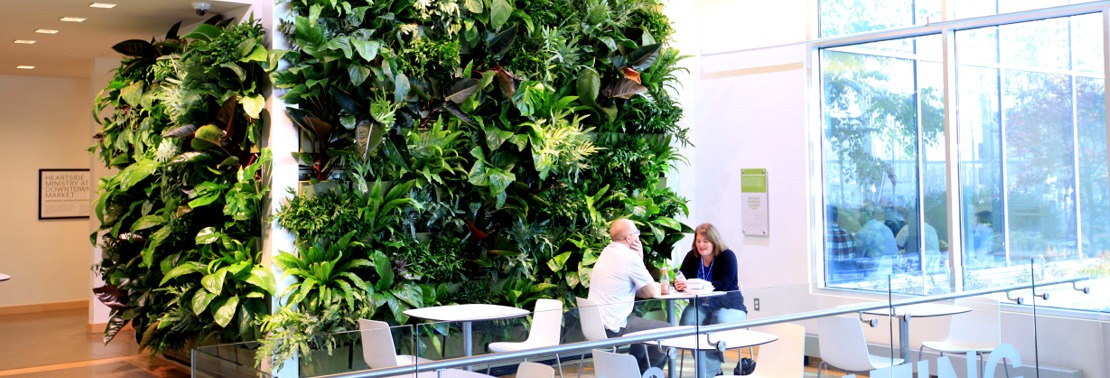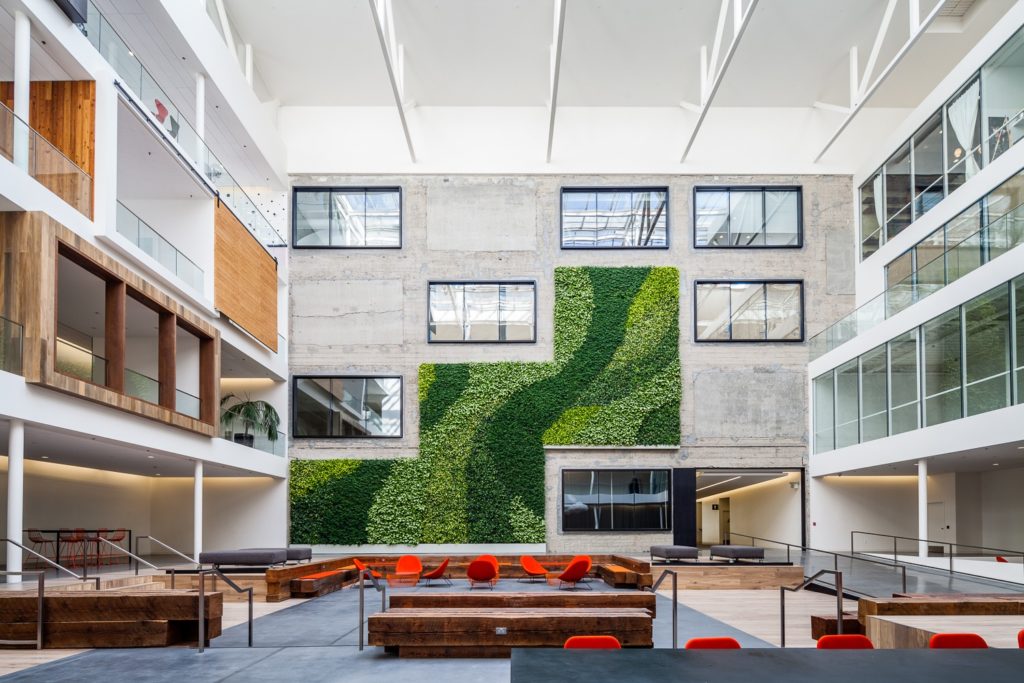Olaf Jensen of Safety & Health Practitioner writes:
Biophilic design might seem like a pretentious name for a simple concept, sticking a few plants in an office, but significant evidence and research suggests carefully planning a workspace or urban area around access to nature has an enormous impact on health, wellbeing, productivity, creativity and the environment.
How biophilic design is integrated into buildings
Biophilic design rests on introducing more natural light and air, and incorporating water and live plants into a space, as well as using materials such as natural wood and stone, and decorating with earth tones like brown, green, and blue. It can even involve animals and fire, although these are understandably more difficult to implement.
Skylights and glass walls can increase light and allow people access to weather, green walls, rooftop gardens and plenty of interior plants increase greenery, and tactile and visual design lets people feel and see natural elements and observe the way they change.
For instance, adding plants, trees, gardens and green roofs to urban environments improves rainwater runoff and act as ‘biofilters’ for carbon dioxide. It also increases biodiversity by encouraging species of insects and birds to return to cities.
Read more: How biophilic design can transform workspaces forever
 Greenroofs.comConnecting the Planet + Living Architecture
Greenroofs.comConnecting the Planet + Living Architecture









